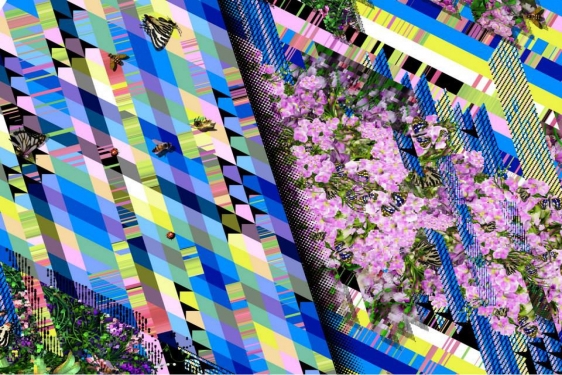Matter, Materialism
The contemporary project of Design (inclusive of SD) is situated by new materials and material forms. The emergence of “modern” Design is concurrent with the emergence of the materials, processes and technologies of mass production and distribution: plastics, metals, molding, modeling, printing, stamping, shipping, replicating, stacking, etc. For the Design of what Reyner Banham called “the first machine age,” industrial materials allowed for the inexpensive distribution of standardized designs to a mass society: new matter provided for a new materialism. Chemistry as much as economics (probably not so divisible at the end of the day) would drive the anthropology of this era’s tangible culture. The periodic table of the elements, innovated by Mendeleev and others, would provide an alphabet for the composition of substance and conjugation of form. In turn, as techniques became schools of thought and designed forms became fixed at certain levels of implementation (type and image, shelter, apparatus, transportation, etc.), modern Design (and Design education) would coalesce around corresponding expertise in graphic design, industrial design, interaction design, architectural design and so on.9
Today we confront another gamut of materials that is potentially just as transformative. From biotechnology to the internet of things to artificial intelligence and robotics to networked additive manufacturing and replication, this material palette provides for the recomposition of the world at scales previously unthinkable, turning living tissue into a plastic medium and imbuing inorganic machines and landscapes with new sorts of practical intelligence. The social and ecologic project for SD is not only to master an articulation of these new registers of matter, but also conceive a (real) new Materialism10 that would ratify the organization of society in the image of their still largely-unmapped potentials.
For Design practice, these material systems are of interest to the extent that they allow for the remaking of that world at a more granular level, and for Design theory to the extent that they disenchant and demystify something about our world and our species within that world. As each of these also now occupies some spot on the curve of various hype cycles, from wondertech to everyday appliance, the incantation of their names supposedly signifies futuristic thinking — even when it actually does not. The flowering of their potential for Promethean demystification and refashioning is not automatic; it must be designated. Still, it should go without saying that technological populism and biochemical futurism are not essentially anti-progressive (and for future Wes Andersons, these emerging technologies will also provide for/thematize a pastoral gizmo authentique yet-to-come).
The longer-term development of SD and related initiatives (not just at UC San Diego where I teach, but anywhere) should formulate its professional, theoretical and pedagogic expertise with this contemporary material palette by putting it in contact with other critical experiments and active geopolitical and geoeconomic contexts. At the same time, the translation of new materials into a new program for social and ecological organization may also direct the sometimes overly self-referential Arts and Humanities toward new outward-facing feats of abstraction, imagination and rationalization.
